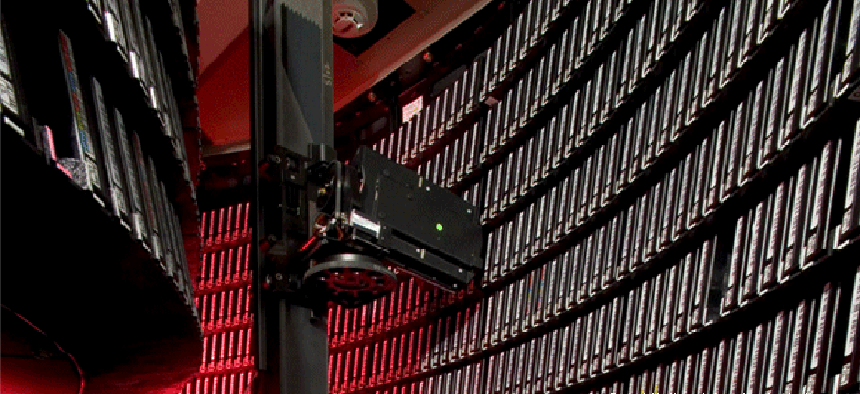Facing a data quagmire, Nebraska puts storage systems in order


Connecting state and local government leaders
Nebraska's Office of the Chief Information Officer has turned to virtual tape storage tech to tackle a growing data overload.
Government agencies are making progress on becoming more economical by gradually consolidating data centers and moving their more prized – and expensive – data sets to the cloud.
Even so, many agencies find themselves losing the battle to contain data now growing at exponential rates. That’s the situation the state of Nebraska was in when it began to look for more efficient storage systems, including new virtual tape technologies to help automate more of its data storage tasks.
Nebraska’s Office of the Chief Information Officer found its legacy storage systems and practices had become a bottleneck to keeping up with the demands of providing data services to state program agencies.
Fred Lupher, a systems programming manager, said the OCIO’s “DASD farm” (direct access storage devices) was backed up to tape every weekend, accounting for 1,800 separate tape mounts, while another 900 tapes had to be copied. All of the cartridges -- 2,700 in all -- “had to be packed in containers and manually transported off-site for safe-keeping,” he told IBM Systems Magazine.
The routine started on Sunday and ran through mid-Monday. “It was just crazy,” he said. During the week, the OCIO often had to deal with 10,000 tape mounts, which led to processing backups when not enough drives were available.
That was especially the case after hours, Lupher said, during batch and backup processing. What’s more, the number of tape mounts affected the agencies and offices served by the OCIO, which were being charged $1.40 per mount, not including storage.
In looking for a remedy, the OCIO considered technologies that would improve tape backup as well as disaster recovery. After putting out a request-for-proposals, Nebraska picked a solution that included an IBM System Storage TS7740 Virtual Tape Server (VTS) loaded with 256 virtual drives, an IBM automated tape server and 12 IBM TS1120 tape drives.
The solution also included a Virtual Data Recovery tool from Open Tech Systems for disaster recovery. The tool identifies all data sets that have been written to the virtual tape server during the previous day and copies them to tape. Using it, the OCIO says it can now transport a single cartridge — containing 2,000 to 4,000 data sets — on a daily basis.
Altogether, according to IBM, the OCIO has been able to consolidate 40,000 cartridges down to 300. Improved security was another dividend. Earlier, tape media was copied and put in a container called a turtle case and carried off-site. Now, encryption is carried out as data is written to tape at the tape drive level.
Program analysts also are using the new technology to access data that was previously consigned to secondary storage media such as DASD. The virtual elimination of physical tape handling has allowed tape library employees to be trained and moved into other roles within the organization.
Altogether, storage requirements have been cut, processing time has decreased, staffing for tape mounts and handling has been nearly eliminated, and a disaster-recovery plan has been put into place, according to the OCIO. “We couldn’t have asked for more,” Lupher said.




